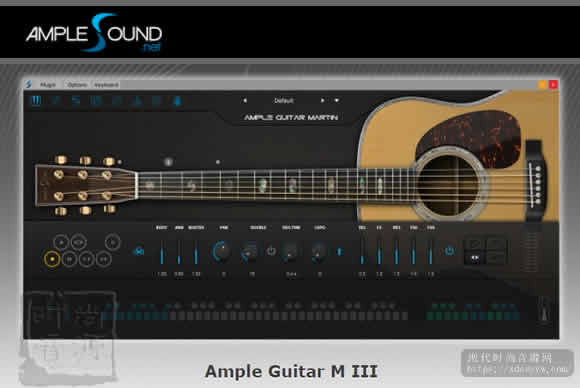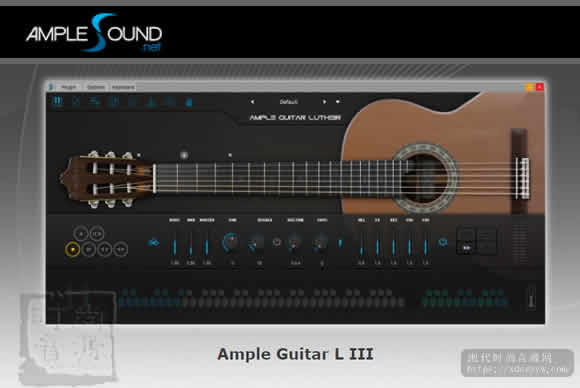FANTASTiC | 23 April 2020 | 57.7 GB
![图片[1]-Sonokinetic Indie v1.1.0 [KONTAKT] | 音色插件资源网-音色插件资源网](https://www.yinsebar.com/wp-content/uploads/2020/04/23042029_sonokinetic-indie.jpg)
Many people assume that Sonokinetic’s signature sound is grand and statuesque, as we fill our recording space with many talented players and layer phrases together in our bespoke Kontakt engines. However, sometimes it’s great to dial things down for a more personal feel, and that’s just what we’ve done with Indie. The style of these intimate ensemble phrases take their lead from modern TV drama, boutique film and independent video games with a naked and personal sound.
Recording smaller versions of our string, woodwind and brass ensembles just wasn’t enough this time around, so we’ve also supplemented them with a huge selection of melodic percussion phrases. For the first time ever, string quartet phrases have been included, perfect for layering with the other ensembles to bring the focus back to your compositions. The overall emphasis here is on the lightest of touches, from delicate violin duos and solo clarinet to harp glissandi and gently played mallets.
In fact, the melodic percussion deserves a special mention as we made sure to catch all the subtlety and wonder of these instruments, including the seldom-sampled concert cimbalom, a dulcimer-like instrument with a unique sound. The dreamy melodic textures we composed for Indie were delicately played by our performers in the same space as the other ensembles. Marimba, xylophone, glockenspiel, vibraphone, crotales, upright piano, celesta and concert harp bring an intense personal feel to the whole collection.
We felt that the Indie recordings were well suited to the playback engine which we originally debuted with ‘Noir’, our jazz-drenched section library. That means that the 12 preset keys each hold a single performance. Mapping phrases like this makes it easy to combine melodies and harmonies and hear real-time performances intertwine with one another.
The randomize feature also makes a welcome return, which conjures twelve complimentary phrases with every press. There’s also the option to randomize per orchestral section, either string quartet, string ensemble, woodwinds, brass quintet or melodic percussion.
Producing Indie was a experience like no other and we hope that when you hear it, you’ll feel the same way.
We, at Sonokinetic BV, are very proud to introduce Indie to you and can’t wait to hear the amazing things you, our valued customer base, will produce with it.
Sonokinetic has established a name as one of the best value & quality sample producers and with this product we’d like to underline that statement. We stick with our unbeatable pricing module and high quality sampling.
The Interface
Left is the main interface for Indie. This particular screenshot is showing a woodwind phrase assigned to the F key, of the 12 available preset fields. Each of the fields operates in the same way with options for choosing phrases, mod wheel control, tempo, score view, harmonic shift, offset, X-fade, panning and volume.
Accessibility
There’s also a far less artistic, but simpler GUI layout available by clicking on the Sonokinetic logo. This changes the text to a more standard font, increases the color contrast and unblurs the icons – useful for those with accessibility concerns.
Preset Fields
Indie has 12 preset keys that can be used to trigger phrases and these relate to 12 fields of the interface shown here.
We’ve sampled string quartet, strings, woodwinds, brass and melodic percussion and you can play the phrases by playing keys from MIDI C3-B3. These are also tempo synced to your host DAW BPM. As you play each phrase the main interface graphic will change to display that phrase and preset field.
The colors of each of the 12 fields, which represent instrument sections, are also shown on the GUI keyboard – a quick reference for the 12 playing keys.
Purging
You can purge the samples from an individual preset field with this icon – and click again to reload. Use this function to free up system RAM.
MOD Wheel
By default the MOD wheel of your MIDI keyboard will control the output volume of all preset fields. However, it’s possible to disable MOD wheel control for one or more fields. This allows greater expression as you can keep the volume of one or more phrases constant whilst changing others with the MOD wheel. Use this to create interesting, constantly changing phrases and crescendos / decrescendos. Click this icon in each preset field to toggle MOD wheel control on / off.
Speed Control
Phrases in Indie have been recorded at 100 BPM and will sync to your host DAW tempo by default, being time-stretched within Kontakt to match the BPM. However, it is possible to switch all phrases into half / double time. Click the ITM icon to change the playback speed of the phrase, relative to your DAW’s BPM.
1X : Original recorded speed, relative to DAW BPM
2X : Playback at 2 x speed, relative to DAW BPM
1/2 X : Playback at ½ speed, relative to DAW BPM
ITM : Automatic – “Intelligent Tempo Mapping” – Playback at recorded speed, but at automatic half / double time at extreme tempi. This is generally the best speed setting. However, if your project has a tempo change mid-phrase, you may find that an alternative speed setting may be more useful. Also, when you are doing gradual tempo changes across a large range, it might be a good idea to opt for one of the fixed values instead of ITM.
Score View
The phrases in Indie are represented by graphics instead of actual notations. However, clicking on the score icon shown here will access the original notation. This will open a large Score View, where you can view the currently selected phrase in notated form.
From this window you can directly access the score for your currently selected preset field and see the major, minor and dominant variations of it in all 12 root keys.
Drag MIDI
The Indie interface features a DRAG MIDI button in the score view window. Click the MIDI legend or orange swatch, hold and drag into your DAW to paste the MIDI information from the Indie score straight into tracks of your DAW.
One or more MIDI tracks will be created in you DAW which correlate with the number of staves shown in the score view for that particular phrase. You can then assign your own virtual instruments to these tracks and edit the MIDI data in the normal way.
We’ve developed this to be a real time-saver when you need access to the MIDI data of Indie outside of the instrument itself. Drag MIDI is useful for several things and gives you ultimate flexibility over the notation of the phrases within Indie. For example, for doubling instruments, transposing or more complex editing. Drag MIDI also allows a quick and easy way for orchestrators to transfer Indie’s phrases to a score prepared for live players.
Please note that the MIDI is derived from the original score that the musicians performed, not from the performance itself. Therefore the MIDI will not reflect the nuances of play, and you may have to adjust it manually to get a perfect match with the played performance when doubling it with external instruments. Also note that the MIDI dragged cannot be used as an input for Indie, you’ll need other virtual instruments on different tracks in your DAW to play the dragged and dropped MIDI files.
Harmonic Shift
The Harmonic Shift function allows the user to play phrases simultaneously in different, but related, keys. This function can be used to access even more complex chord combinations and harmonies when phrases are played together.
Harmonic Shift can be turned on or off for each preset field with the +/- button but it’s most useful if you turn it on for some preset fields and off in others.
You should note that Harmonic Shift only designates an interval, relative to C. For example, playing an Em chord and then using the Harmonic Shift keyswitch at D# (an interval of a third) would add a minor third up from Em. This would result in a G major phrase being added. By default we have chosen a relative major or minor for each interval, which we deem most useful.
The effectiveness and musicality of the Harmonic Shift varies, depending on the phrases you assign to each field and the harmonic shift intervals that you play. Experiment with different phrases and settings to create interesting and surprising textures and note combinations.
Microphone Mixing
Click this icon at the bottom left of the interface to display the microphone mixing controls. Mouse-over the pick swatch to activate the icon.
The samples for Indie have been recorded in the same hall as sister libraries Largo, Noir, Espressivo, Tutti Vox, Ostinato series, Maximo, Woodwinds Ensembles, Sotto, Capriccio, Grosso, Minimal, Da Capo, Tutti and Vivace.
As such, Indie has similar options for microphone mixing; Close, Decca Tree, Wide and Far (balcony).
It is possible to use just one microphone position or mix between two different positions.
- These different positions can be selected by clicking on the microphone position name.
- Mixing is controlled by dragging the slider button. The crossfade operates in such a way that the central position will play both microphone positions at full volume.
- Microphone mixing options are global and apply to the entire instance of Indie including all phrases and fields. Note that activating multiple microphone sections puts additional strain on CPU usage.
- If you plan on using just one microphone position, set the other position to NONE to conserve CPU and RAM.
home page https://www.sonokinetic.net/products/instruments/indie/


![[三体中国民乐全套 效果器合集] 古风中国风编曲必备 R2R [WiN, MacOSX](40GB+)稳定运行版本-音色插件资源网](https://www.audioba.com/wp-content/uploads/2024/12/20240725195002777-QQ_1721908198947-734x550-1.png)

![[最新Ample吉他3代音色免安装25套合集]Ample Guitar Bass v3.7.0 [WiN, MacOSX](77.1GB+)-音色插件资源网](https://www.audioba.com/wp-content/uploads/2024/11/ample-sound.jpeg)
![[智能自动编曲软件 ]band in a box 2024 中文汉化完整版+安装方法 [WiN](201GB+)-音色插件资源网](https://www.audioba.com/wp-content/uploads/2024/10/Band-in-a-Box-10.jpg)










